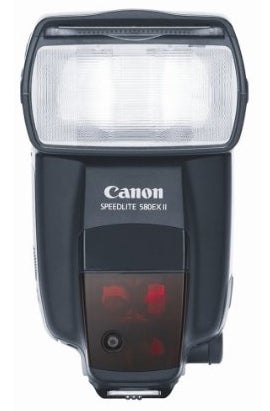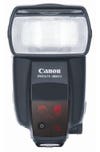5 Things You Didn’t Know About Hot-Shoe Flash
From the batteries to TTL metering, these facts will surprise you.


Hot Shoe
1. TTL metering is overrated.
DSLRs, with their exposure histograms and instant-feedback LCD screens, have diminished the importance of TTL (through-the-lens) flash metering. If you find a powerful, fully articulated, shoe-mount flash at a really good price, regardless of whether it’s TTL-dedicated to your camera or not, consider buying it, if only as a backup unit. Using autoflash metering or simple manual flash, your camera’s histogram and LCD preview can quickly lead you to perfect flash exposure, without TTL, often at a significantly lower price than a fully dedicated flash.
2. Batteries are a big deal.
The type you select has a major impact on performance. Lithium AA cells offer light weight and huge capacity, but slow recycling. NiCds give you super-fast recycling, but far fewer pops per charge than NiMH cells, which have virtually replaced NiCds in the rechargeable category. Alkalines are cheap and available everywhere, but provide so-so capacity and recycle times.
3. Manually setting zoomhead focal length gives you special effects and other cool benefits.
Autozoom heads are great for assuring adequate flash coverage for your subject, regardless of the focal length of the lens you’re using. But have you ever noticed that you can also set you flash’s zoom head manually? By dialing in a zoom setting that’s longer than the focal length of your lens, you can create automatically vignetted corners for your images-something portrait photographers usually have to add in postproduction. Conversely, if you set a wider focal length on the flash head than you’re shooting with, you help assure your picture is evenly lit edgeto- edge, with no falloff in the corners- perfect for group portraits.
4. Hot-shoe flashes aren’t confined to hot-shoes.
Many can be used off-camera and triggered by radio or infrared systems. (Canon’s and Nikon’s are highly advanced.) These often provide TTL exposure control, and usually include a transmitter built into the camera or placed in its hot-shoe, and a receiver attached to or built into the flash. Used off-camera, your hot-shoe flash can produce side-, backor toplighting for far more creative effects than frontlighting alone can provide.
5. Shoe-mount flashes make experimenting easy.
Don’t be afraid to set your camera’s manualexposure mode-it’s not hard to use and will let you customize exposure precisely. Using a shoe-mount flash in dim lighting lets you confidently experiment with your camera’s manualexposure mode, because TTL-controlled flash will automatically produce the correct light output for (almost) any shutter speed and aperture combination you set. This lets you play with depth of field, as well as relative foreground and background exposures-all the while confident that your subject will be correctly illuminated.